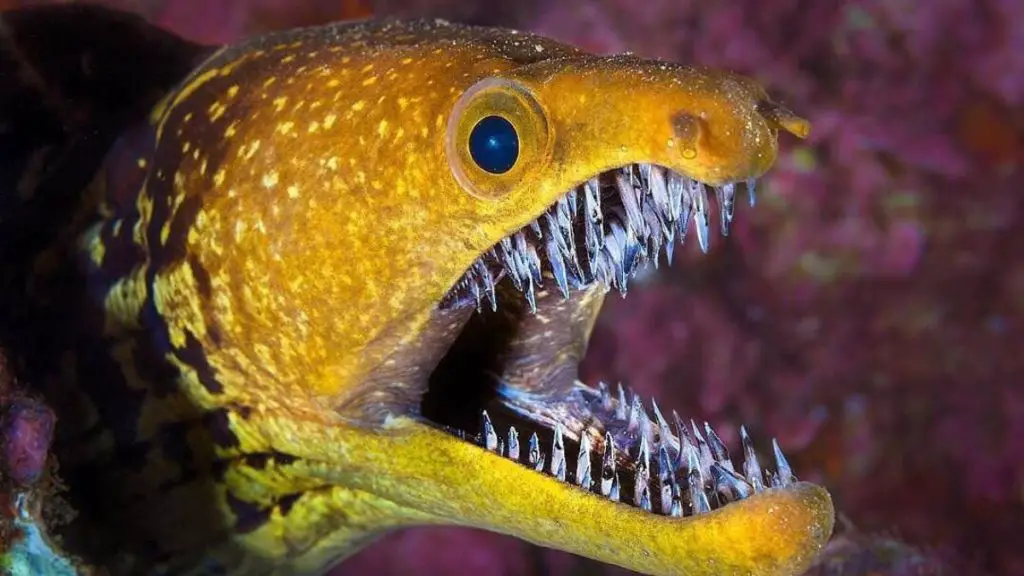Eels are a species of fish that are often mistaken for sea snakes. However, despite not being actual snakes, eels are one of the most dangerous fish in the ocean. Some eels are more dangerous than others.
Moray eels are by far the most dangerous amongst the different types of eels. Morays prefer to live in shallow waters in tropical and subtropical areas and hide between rocks and reefs. They typically eat a diet of fish, mollusks, and crustaceans.
They are aggressive and are known to attack humans when they feel threatened. These eels have a jaw full of sharp and rigid teeth that they use to grab and hold on to their prey. Their teeth are so sharp that they are able to bite off and swallow human fingers.
Ever wondered what does an eel bite look like? There’s not pretty. Click here to see some photos. And, for those of us that keep any kind of eel as pets, or who think its fun to play with them while diving/snorkeling, here are some tips to avoid getting bitten.
Because let’s face it, it’s one thing get a bite from a one-foot juvenile snowflake eel (they have rather small teeth) compared to a 5-foot green moray that’s capable of ripping the flesh from your bones.
All species (except zebra, chain-link, and ribbon moray eels) above 3 feet should be considered difficult to handle as they can potentially hurt you during care. Some of the smaller species, for example, with long and curved teeth, such as the various dragon moray eels also need special attention.
Try to avoid putting your hands in the fish tank. Always use feeding sticks, long pliers, tweezers (which you can get at an online fish shop or local pet store to feed any kind of eel. If you encounter an eel in the wild, leave it alone. Swim the other way.
Also read:
